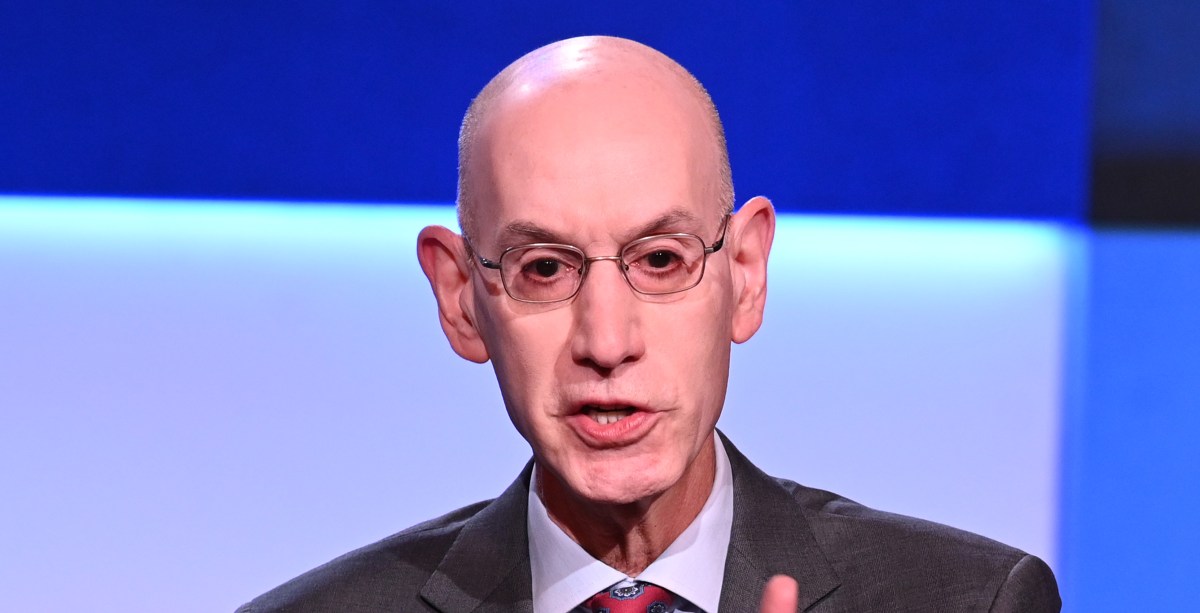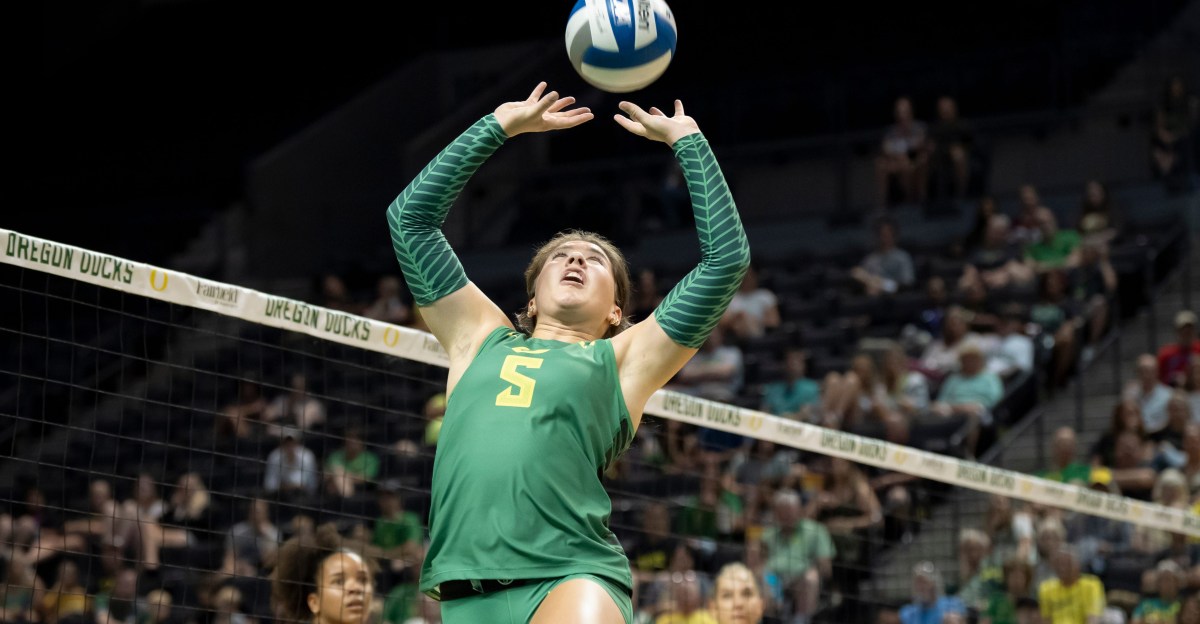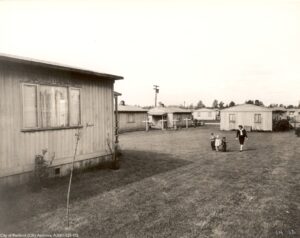Duck Dive: Iowa Hawkeyes Football 2025 Preview
Special thanks to Tom Kakert of Hawkeye Report for joining me to discuss Iowa’s roster on this week’s podcast:
:no_upscale()/cdn.vox-cdn.com/uploads/chorus_asset/file/26002498/Iowa_offense.png)
Last year’s preview of Iowa discussed what was necessarily a confluence of several structural and ephemeral factors — taking an already pretty weak offense and further suppressing it to historically low levels in 2023 — and the prospects for which of those factors would likely immediately lift on their own, which could be addressed in short order, and which would require long-term fixes if even at all.
The Hawkeyes in 2024 made a significant improvement on an overall basis, climbing by over 60 ranks in F+ advanced statistics, although they were so far in the basement the year before that this just meant they got to be an average offense for the FBS. Just as there were a combination of many things going wrong in 2023, there are a lot of trends that interrelate in 2024 – it’s not an evenly rising tide across the entire performance, nor does it come down to the change in a single personnel member or aspect of the offense.
While both the rushing and passing offense climbed in each of the major metrics I track from charting, Tom and I agreed on the podcast that they were of a different nature. The passing offense in 2024 was still by any objective measure pretty bad, and the Hawkeyes had a similar problem as in every year since Nate Stanley was drafted at the end of the 2019 season – subpar QB play marked by frequent injuries. But it wasn’t as horrible as in preceding seasons (with the especially snakebit 2023 season as a real standout; Tom listed the major injuries that year on the podcast and it got to be gruesome) with a reasonably long stretch in 2024 for the backup QB staying healthy who was probably better than the starter in the first place, and then when he seemingly inevitably went out the third-stringer managed to go undefeated as a starter in the last two games. And so the awfulness of Iowa’s passing offense retreated in 2024 to merely normal levels.
The rushing offense, on the other hand, made a truly enormous leap, I believe the biggest I’ve ever documented in a rushing offense in 15 years of charting teams, and to levels that were not just above average but coming close to championship caliber. With that big of a single-year change, especially given that the running backs and offensive line personnel were essentially identical between 2023 and 2024, there’s something real going on – that’s not an ephemeral thing like one guy getting healthy or just a single artificial suppression factor being lifted. Tom and I spent quite a while on the podcast dissecting the causes and we came to these four explanations:
- New OC Lester’s run scheme – replacing Brian Ferentz and his simplistic, fullback-oriented scheme with Lester’s scheme that employs pre-snap motions consistently confused defenses;
- Kaleb Johnson put on a cape – the lead running back found a gear that he didn’t have in 2023 and had a breakout performance that he generated on his own;
- The offensive line grew up – the core group of o-linemen had been starting since 2021 and hadn’t executed such a run-heavy offense that well, but in 2024 as upperclassmen they clicked;
- Finding a passing game took the pressure off – in the past, zero threat of a passing attack meant completely stacked boxes, and defenses had to lighten up a bit in 2024.
Both Tom and I were in complete agreement that all four of these things had to play at least some role in the tremendous explosion in rushing performance in 2024, though we disagreed on what the exact mix was. Tom seemed to take a fairly even approach to each of them, and took some time emphasizing the first two on the list. Lester’s scheme is certainly more suitable to modern college football, and the ways that it can stress the defense are worth appreciating for their differences to his predecessor’s. But in my experience schematic differences which bring big performance changes usually entail a falloff over the course of the season as opposing teams get more film and adapt (e.g., Indiana’s offense or UW’s defense in 2024), and the charting data doesn’t bear that out for Iowa’s rushing offense – it stayed equally productive all year, indicating a fundamental not schematic strength.
Johnson’s performance was indeed excellent but I think the argument that it’s all or even largely attributable to an individual breakout is the weakest of them; I’ll discuss this in the context of his 2023 numbers and the rest of the running backs below. Tom and I both think the passing offense improvement played a real but modest role, since it’s not like defenses were actually worried about the passing game, they just couldn’t treat it like a complete non-factor. In my opinion the third point regarding the offensive line is the most powerful one. I’ll detail the personnel as well as the implications for the 2025 season later on in this article; the salient matters for the offense as a whole are that it’s the only explanatory factor that survives every data test I’ve thrown at it, and that all the same forces — OL coach Barnett, his methods of development, the nature of the talent pipeline, and reasons for both early mixed performance and eventual breakthrough – that have shaped the o-line in the years up until this point remain in place for the coming season.
The three quarterbacks Iowa played in 2024 were Cade McNamara, then Brendan Sullivan, then #19 QB Stratton. McNamara had began his career at Michigan and was the starter in 2021, lost his job to JJ McCarthy early enough in 2022 to redshirt and transfer out, and became the starter in 2023 at Iowa until a grisly non-contact knee injury against Michigan State sidelined him for the rest of that year. He returned as starter at Iowa in 2024 and technically held that position through week 9 but Northwestern transfer Sullivan took an increasing number of reps each game, until a McNamara pick-six (returned by future Oregon transfer Theran Johnson) benched him for the rest of the season in favor of Sullivan. Tom called the situation “foggy” and referred to “concussion-like” symptoms but intimated that performance reasons would have been an adequate explanation for the change. Their NCAA passer ratings showed a massive differential – McNamara’s 115.8 was nearly two standard deviations below FBS median while Sullivan’s 154.3 was nearly one above it.
Sullivan suffered an ankle injury in the 3rd quarter against UCLA and he couldn’t finish the regular season but returned for the bowl game, a close loss to Mizzou. That brought in Stratton, a walk-on (Tom filled me in on what was apparently an announcer’s goof that snowballed into a self-deprecating joke among Iowa fans; Stratton was mistakenly described as a defensive player forced into a passing role and Iowa fans ran with it but in fact he’s always been a QB) who led a touchdown drive to tie that game up and then as starter in the final two weeks led the Hawkeyes to somewhat remarkable, though very different, wins.
McNamara hit the portal in early December and transferred to an FCS school in January. A couple young QBs, Marco Lainez and James Resar whom Tom described as simply not developing into viable candidates, transferred out early as well. Sullivan and Stratton stayed for Spring ball, and they took two transfers in the early window: #11 QB Gronowski from South Dakota State and #9 QB H. Brown from Auburn.
Gronowski had led the Jackrabbits to back-to-back titles and won the Walter Payton award (Northwestern had wanted to to get him in the portal to re-unite him with his former OC last cycle, but he stuck around another year in Brookings). If there ever was a race between Sullivan and Gronowski in Spring ball, Tom’s right about the signal that Gronowski won it when Sullivan transferred out in the April window. Stratton remains and there’s likely a battle for backup between him and the young but intriguing Brown (he had a 173.6 passer rating on 43 passes, mostly against Arkansas and New Mexico) and perhaps the very late redshirt freshman transfer from Wake Forest, Jeremy Hecklinski.
Other than the perennial question for any Iowa quarterback — staying upright — the unknown for Gronowski is whether his success will translate from the FCS to the Power conference level. Gronowski’s 146.9 rating on 338 attempts and 7.97 YPA in 2024 is nearly identical to Max Brosmer’s statline in his final FCS season before transferring to Minnesota, 146.1 on 459 and 7.53, and Brosmer fell to a below average 137.2 against Big Ten defenses.
The same five running backs got meaningful carries in 2023 and 2024, although the usage was significantly different. The 2023 recruit #8 RB Washington was used almost entirely in garbage time with only a handful of meaningful carries both years. Leshon Williams was the lead back in 2023, getting a little under half of all carries prior to garbage time for this group that year, but he was hurt early in 2024 and missed the rest of the season; he’s now transferred out.
Johnson was the second back in 2023 with about 30% of carries, and his absolute number of touches doubled to over two hundred in 2024, and as a proportion went up even more. The other two backs in the room continued to split about 85 meaningful carries between them, #28 RB Moulton and #9 RB Patterson (the split favored Patterson more in 2023 and Moulton more in 2024).
Because Johnson had nearly 70% of the carries in 2024 he had by far the most opportunities to shine, and he did just that with excellent per-play numbers which were a massive jump from his 2023 performance: a 55% per-carry success rate, up an astonishing 21 percentage points from his abysmal 34% in 2023, and 5.6 adjusted YPC which was up more than two full yards per touch from his 3.5 the year before. He was drafted last month in the 3rd round by the Steelers.
Moulton and Patterson return, and while they had fewer carries, they had more than enough and in an adequate distribution for statistical evaluation in both years. They enjoyed nearly identical per-play jumps in performance as Johnson in 2024: up 16.5 points and 2.6 yards for Moulton and 18.5 points and 2.3 yards for Patterson. But they started ahead of Johnson in 2023, with below average numbers but not nearly as bad as Johnson’s, such that they finished 2024 with numbers that are elite: 62% success and 6.4 adjusted YPC for Moulton and 70% and 5.8 for Patterson. Now, I suspect that the differential with Johnson has to do with fatigue and freshness, and that if Johnson were relieved a bit more his numbers would increase while the others would flag a bit with the extra work. But this speaks to two things: first, the distribution of carries is plainly irrational (it demonstrates that Tom’s assertion on the podcast that Iowa rides the “hot hand” is accurate, wise or not), and second, the “it was all and exclusively Johnson blossoming” theory has no evidentiary support.
I considered this to be good news for Iowa, since it would mean that losing Johnson while retaining Mouton and Patterson wouldn’t necessarily put a dent in the revitalized run game, but Tom still seemed dour. He suggested I look into the explosive and full-field rushing numbers, as Johnson had quite a few of those and he drew the normally taciturn head coach’s fulsome praise, while Tom didn’t think much of Moulton or Patterson’s potential in that regard. Statistical regression controlling for field position shows that Johnson did have a measurably better chunk-yardage rushing rate, by about four percentage points (that’s pretty valuable and shockingly rare in this ostensibly run-oriented league, but it wasn’t Tom’s point), however in all the longer rushing categories each of the three backs had virtually identical rates of performance:
:no_upscale()/cdn.vox-cdn.com/uploads/chorus_asset/file/26002497/Iowa_RB_graph.png)
Tom pointed out that since Johnson sat out the bowl game against Mizzou we got a preview of the 2025 room; Moulton and Patterson split 23 meaningful carries and averaged 7.4 YPC between them which looked pretty promising. As far as how the rest of the room goes, Tom said we’ll have to wait and see. Washington may or may not join the rotation in earnest as the third back, or perhaps be reserved as a 3rd down back, depending on how he works out with some of the other things we haven’t had a chance to see like blitz pickup. We also discussed the couple of redshirt freshmen Iowa took last cycle, the “bowling ball” #26 RB X. Williams and track athlete #23 RB Doll, plus a this cycle’s prep recruit who Tom thinks could be the lead back of the future, #25 RB Mitchell.
Iowa’s tight end room has had some misfortunes the last few years. After Sam LaPorta was drafted in the 2nd round at the end of the 2022 season, it seemed to me like the Hawkeyes weren’t thrilled with the state of the room outside of Luke Lachey. They took two transfers that cycle, Erick All from Michigan and #88 TE Large from the NAIA, in addition to an FCS transfer they’d gotten in the previous cycle, all of whom passed up multiple guys in the recruiting pipeline. They’ve had five tight ends they recruited transfer out since that point, and the two who played other than Lachey or the transfers, #48 TE Ortwerth and #87 TE Ostrenga, have not seemed up to the NFL pedigree of their predecessors. Both All and Lachey were having NFL-caliber seasons in 2023, but one then the other got hurt that year. All was drafted anyway, while Lachey returned for 2024 but most observers including Tom seemed to think he wasn’t back to 100% from his injury and it cost him in draft stock, falling to the 7th round.
The blocking tight end Large returns in 2025, as do Ortwerth and Ostrenga, who each got about a quarter of meaningful TE targets to Lachey’s half. The Hawkeyes have taken no transfers this cycle and the rest of the room is nothing but redshirt or true freshmen who are unlikely to play (although Tom mentioned a walk-on redshirt freshman #81 TE Vonnahme I didn’t have on my tally sheet as getting a bit of run, which I took as commentary on the state of the room), so it’s probably going to be those three.
I think Tom and I were in agreement that the staff had settled in for this group in 2025 but also that it’s likely to be a step back in production, with the senior Ostrenga playing for the last three years and never distinguishing himself — Tom said “he is who he is” — and a career 42% per-target success rate with 4.9 adjusted YPT. If anyone is going to step up in terms of receiving it’ll be the junior Ortwerth based on Tom’s observations. That would be remarkable, as Ortwerth’s numbers to date are worse than Ostrenga’s, at 33% success and 4.2 YPT.
Tom and I viewed the wide receiver corps differently; not because we disagreed on the facts or evaluations of the film, but I think just a difference in perspective. Tom’s point that the returning group of 2025 receivers is the deepest and most talented it’s been at Iowa in a long time is perfectly true – all eight guys return, with the only departure being Kaleb Brown (an Ohio State transfer who didn’t see the field and transferred back out), and they’ve added an accomplished upperclassman slot receiver from the FCS ranks, #2 WR Phillips, at the spot in the unit that needed it the most.
My perspective is that the latest iteration of the wideout room in Iowa City can be superior to any previous one and still not measure up objectively. To me, paradoxically the best and worst news for Iowa is in returning top receiver #5 WR Gill’s per-target numbers – what’s great is both that his success rate at 59% and adjusted YPT at 8.7 are excellent, and that the distribution is rational in that he was consistently thrown to the most, twice as often as anyone else regardless of QB. But what’s problematic is that Gill blew everybody else away on a per-target basis (which accounts for volume of targets on a rate basis and is normalized for field position effects). The three others who had enough targets for statistical evaluation — #6 WR Anderson, #0 WR Buie, and #15 WR Vander Zee — each finished the year with nearly identical success rates at about 37% and 5.2 adjusted YPT, which are extraordinarily poor numbers for just one wideout much less three. And since we know that Iowa had a wideout in Gill capable of posting great numbers in 2024, systemic effects – e.g., QB problems or playcalling or a tough slate of pass defenses — aren’t great explanations for the poor performance.
When I pressed Tom on this question, he acknowledged how it looked but said that to his eyes the production is somewhat misleading – he described Gill as “solid” with his best asset being that he stayed healthy all year and was able to develop rapport with all three QBs, while he described the physical dimensions of Vander Zee and the speed of Anderson being far superior in practices but they kept suffering injuries. He said those and the confounding factor of finding chemistry with a new QB as each WR re-entered the lineup are the best explanation for why there’s such a discrepancy between their apparent talent and their per-play production vis-à-vis Gill. I know the effect he’s talking about, I’ve seen it on tape and have done some statistical work to document that it tends to knock off a couple percentage points in receiving efficiency, so this is hardly imaginary. As we discussed on the podcast it’s a real advantage having such a deep room because it allows the staff a free hand to choose the rotation without constraints, as injuries forced last year, so I’m expecting some step up here. But I’m skeptical that it’ll be a major jump – 20+ points in efficiency differential across three wideouts is almost certainly a fundamental talent issue.
Gill and the transfer Phillips at the slot are virtually locks for starters, and if Tom is right then they’ll find the third starter in the 11-personnel offense among Anderson, Buie, or Vander Zee (I might go with the last, as at 6’4” he’d provide the biggest height advantage on the outside and they might need some size if the tight end room isn’t giving them much to work with). I’ll be interested to see if the staff shakes things up in Fall camp and looks to one of the three younger wideouts who haven’t gotten much play yet: two 2023 recruits in #7 WR Howard who’s also listed at 6’4” (Tom mentioned him as a very big target) and #14 WR Mota who as a high 3-star is the most talented guy in the room, and 2024 recruit #12 WR Parker who Tom said was the standout of the recent open Spring practice.
I’ve been watching basically the same core group of seven offensive linemen who came in during the 2020 or 2021 recruiting cycles for all four seasons I’ve been charting Iowa, and for the last two seasons there hasn’t been a single meaningful rep that’s gone to anyone else. Those are:
- Mason Richman, the LT since 2021, played every game except two his first year
- #70 OG B. Stephens, the RG in 2022, didn’t start in 2023 recovering from surgery, then LG in 2024
- #65 C Lo. Jones, the starter since 2022
- Connor Colby, started most of 2021 at RG, split 2022 at RT/LG, then RG for 2023 and 2024
- #67 RT Dunker, starter since the bowl game in 2022
- Nick DeJong, the 6th man since 2021 who’s played in every game for four years and started in 24 of them at every position but center
- Tyler Elsbury, the 7th man since 2021 who’s also played in every game for four years, started in six of them at different positions, mostly played backup center and has always graded out better than Jones
It has been my observation through grading these linemen that the main disconnect with the way that Iowa’s offense has been structured (that is, setting aside the ephemeral although of course significant issue of QB injuries) is that this group of lineman just hasn’t been good enough in run-blocking to execute the kind of power run scheme that Ferentz was insisting on.
There’s a chicken-or-the-egg riddle to this for the first several years I was watching them — is the line to blame for not getting it done, or the playcaller for not doing something different — but it’s ultimately moot because in the same season that he was replaced by the new OC Lester, these guys hit their senior or covid super-senior year and their development finally kicked over to a high level. So in 2024 I was finally seeing the road-grading offensive line that Ferentz seemed to think he had all along, and the run game exploded as a consequence (the irony of this being that it would mean Ferentz’s firing as OC was irrelevant; if he’d been retained one more year he’d have gotten the same breakthrough, and then Hawkeye fans would never be rid of him … I didn’t have the heart to say this to Tom on the podcast).
Four of those seven ran out of eligibility at the end of 2024 – DeJong, Elsbury, Colby, and Richman, with the last two being drafted in the 7th round by the 49ers and Seahawks respectively – while Stephens, Jones, and Dunker return for one more year (possibly two for Dunker) at LG, C, and RT. As Tom and I discussed, there’s a powerful mix of upside and downside to this situation given what we know about the past here. Returning three starters who clearly turned a corner, along with the same coaching staff who helped it happen, is a great foundation for the 2025 line.
The downside is that they need two new starters, plus probably at least one new starting-caliber backup if history is any guide, and none of the other returners have any meaningful playing time at all. From what we’ve seen of the talent and developmental curve here — and talking to Tom seemed to confirm that the pool of replacements are cut from the same cloth, with homespun homilies about farmboys — it takes new starters at Iowa some time to become really effective.
From his observations of practices and garbage time reps Tom predicted that 2023 low 3-star #58 OL Pieper will replace Colby at RG, although he’s noticeably smaller at only 275 lbs (Tom said the 50 lbs difference between him and Stephens was very clear when they were next to each other talking to the media). The backups at the interior are likely to be a couple of mid 3-stars, #53 OL Myslinski at center and #64 OL Le. Jones at guard. At left tackle there looks like a three-way race, and Tom said he couldn’t tell me who it’s going to be at the moment, though after talking through it I think he seemed fairly certain it was going to wind up being the 2023 low 4-star #74 OL Lauck rather than 2022 mid 3-star #71 OL Dotzler or the recent Div-II transfer Bryce George. If it’s a real race, the upshot is that there’s depth at tackle from the guys who lose out behind Dunker and the new starter on the left.
:no_upscale()/cdn.vox-cdn.com/uploads/chorus_asset/file/26002495/Iowa_defense.png)
Given the overall talent level, DC Parker and his remarkably small staff of long-tenured assistants consistently producing top-10 defenses in advanced metrics is nothing short of astonishing, and Iowa’s defense is one of college football’s core operational models that countless other programs try to emulate. In recent years it’s pretty close to completely shifted over to a fulltime 4-2-5 with a CASH hybrid safety away from its schematic origins as a 4-3 with a wide-ranging SAM backer, but the structure and philosophy are straightforward and unchanging – fundamental assignment football. As Tom and I repeatedly came back to on the podcast, the talent here simply doesn’t have “mistake eraser” athleticism, they win by being drilled so soundly that they don’t make mistakes in the first place, and force offenses to do something that almost every opponent (though not all) is incapable of, which is either crawl down the field or overwhelm their discipline with pure firepower.
In 2024 there was a small — difficult to detect except through close statistical parsing – step back from Iowa’s local defensive peak in 2023. To some extent this was inevitable, the 2023 performance was otherworldy and unsustainable, and had a couple more guys destined for the NFL on it than usual for the Hawkeyes (which is to say, more than one). But it was a decline across every metric I track from charting, not isolated to the ones most associated with that particular talent loss. And from talking to Tom about some of the unit rotations they used in 2024 and why there were more or fewer guys cycling through at different spots than I’m used to seeing, I got the sense that Parker wasn’t thrilled with how everybody was playing their assignments, and that’s job number one in Iowa City.
Where this came to a head was in redzone defense. On the podcast we discussed how this has been Iowa’s calling card for years – opposing offenses could perhaps get away with flashy stuff between the 20s but the Hawkeyes tighten the screws in the redzone and limit them to field goals or nothing at all. This had been true up through 2023, with opponent redzone touchdown percentage averaging 47.5% in the first three years I charted them (in 2022 and 2023 they were top ten nationally in raw stats). But in 2024, redzone defense really tailed off and in some respects even reversed, falling to 62.5% touchdowns allowed which was only 78th nationally. Here’s how their fundamental stats looked, broken out by outside vs inside the redzone and comparing the first three years I charted them to last year:
:no_upscale()/cdn.vox-cdn.com/uploads/chorus_asset/file/26002489/Iowa_Redzone.png)
Looking at defensive performance between time periods, there’s a touch of falloff outside the redzone in 2024 but it’s relatively minor. Where almost all of the hit comes from is inside the redzone where there’s a massive -12.5 point fall in efficiency. And while during 2021-23 the Hawkeyes were about six points better in the redzone than they were at the same things between the 20s, in 2024 that flips so they were now about five points worse when opponents crossed their 20.
That sets the stage for an interesting transition in 2025 – the Hawkeyes are replacing more starters than is typical for them, seven this time around when usually it’s no more than about four as the continuity is usually so well planned and layered. There’s plenty of developmental depth as well as a few select portal moves such that every position has good odds of a strong draw, but it’s still more shuffling than this program is known for, and it’s not like they’re playing with any aces up their sleeves.
The defensive tackles were an interesting unit in 2024. They were headlined by strong play from the starters in typical Iowa fashion (although this has never meant stoning the run in short yardage, they’re just not that kind of tackle, instead they’ll give up three yards or so but only that much and dare you to march the field on a 20+ play drive), who were Yahya Black and the 2022 mid 4-star #95 DT Graves. Black was drafted in the 5th round by the Steelers, the only defensive player selected from Iowa this year, while Graves took a big step forward in 2024 after being kind of stuck in neutral as a sophomore in 2023.
Behind them we really only saw one reliever, junior #51 DT Pittman (wearing #55 last year), and even he was on the field maybe half as much as I’d expect from any backup in a typical four-man rotation for the tackles in this kind of defense, much less for the only backup. The four other scholarship tackles didn’t see the field at all – one was redshirting as a freshman while he got his weight up, #99 DT Kennedy, but there’s no such excuse for the second-years who were at 290 lbs #56 DT Borcherding-Johnson or Chase Brackney, or the junior Jeff Bowie. Brackney and Bowie have transferred out, the rest return.
As Tom put it, the staff “helped themselves out” by taking a couple experienced tackles from the transfer portal: #91 DT Pace from Central Michigan and #96 DT Hawthorne from the FCS ranks. I suspect one or both will jump the entire room and form the rotation with Graves, given their size and prior production, as well as the praise Tom relayed from the staff about them. We talked a bit about Kennedy’s potential to disrupt things since he’s an X-factor and an NFL legacy (his father Jimmy played DT for Penn State and was a 1st rounder with nine years in the league); Tom hs Pittman high in the rotation still, but I think the ship has sailed if Parker was reluctant to play him or the other backups last year and then went for multiple transfers.
The ends look like they’re in the best shape of any of the position groups on the defense to me. They’ve lost one of the two starters to graduation, Deontae Craig, but return the other starter #49 DE Hurkett who graded out a little better against the pass on my tally sheet (though evenly if not slightly behind setting the edge against the run) and has much more havoc generation. They also return both of the main backups, #90 DE Allen and #48 DE Llewellyn. Allen is a year younger and didn’t look quite as far along to me, but Tom said he’s high on him and that Allen has been dealing with a shoulder issue. Tom has Llewellyn penciled in as the new starter as he’s apparently been a terror in Spring ball.
As for the new backup in the rotation, just two other guys got a handful of garbage time reps, 2023 mid 3-star #44 DE Merriweather and Caden Crawford who’s a year older. Crawford transferred out and the rest of the room is made up of three redshirt freshman and a prep recruit so it’s easy to pencil Merriweather in, though Tom said to look out for 2024 high 3-star #40 DE Chineke because he had a good Spring and very highly rated prep recruit Iose Epinesa (brother of the NFL 2nd .rounder AJ) when he arrives in the Fall.
There was an almost 50-percentage point differential between Iowa’s 3rd down pass defense performance on short yardage vs long yardage last year, the typical indicator of how much of the passing defense is coming from the pass rush or the secondary (since in short yardage the ends have to hang back against the run, so the coverage is on their own). This increased dramatically from 2023 when it was only a 29-point gap, a much healthier differential, but the 3rd & long effectiveness in both years remained elite at around 80%. This is to say that the ends have consistently been getting the job done, and to the extent there was an issue in 2024 it was a) the coverage not holding up their part, and b) allowing themselves to be in 3rd & short situations such that the matter was exposed.
Iowa loses both of its starting linebackers at MIKE and WILL to graduation who combined for 215 tackles between them, Jay Higgins and Nick Jackson. Also graduating is Kyler Fisher, who’d I’d describe as the most used backup and the primary wide SAM (called LEO in this scheme) when they deployed that configuration.
The Hawkeyes rotated through several other backups but none were in for enough meaningful reps on their own for quality statistical evaluation. Figuring out the pecking order for 2025 seems fairly straightforward because there’s a significant age and playing time differential, and unlike the tackles or the secondary, Iowa hasn’t gone to the portal here. There are three returning seniors who got backup minutes, and Tom said it’s as easy as plugging in #41 LB Harrell at MIKE, #43 LB Sharar at WILL (Tom mentioned that Sharar keeps running into health issues but the staff likes him a lot), and #12 LB Rexroth at LEO, or perhaps #23 LB Van Kekerix a junior who got backup time in fewer games and Tom called a riser.
At that point Tom flipped over to the trio of recruits from the big and significantly more talented 2024 class, which averaged out at a high 3-star compared to the low-to-mid 3-stars plus couple of former walk-ons this room has been for the last several years. I haven’t seen them at all, or the guys they’d be competing against, but from his observations Tom thinks #33 LB Buffington is likely the backup WILL and #46 LB Reis is the backup MIKE, both redshirt freshmen. If he’s right that would have them jumping the last two returners in the room, #36 LB Montgomery and #42 LB Twedt, a couple of upperclassmen I’ve never seen on the field in any year I’ve charted Iowa and Tom didn’t bring up on the podcast.
Replacing all of the starters at once from a unit who wracked up that many tackles is a tough situation to be in, even though the succession plan seems so clear. As we discussed, it means that your starters are pretty green and your backups are even greener. And since the starters are all seniors and likely done after 2025, you face a tricky choice between playing them more or playing the 2026 guys more so you’re not right back in the same situation the following year. It’s hardly insurmountable, but it’s part of the atypical set of challenges that this offseason full of starter turnover brings for the Hawkeyes’ defense.
We spent some time on the podcast sorting through which of the new and backup secondary players were safeties vs corners, because I had seen so little of them – the safety backups use a staggered sub system so that the starer at CASH rarely leaves the field, he just swaps positions, and the corners used a big rotation as it seemed Parker wasn’t happy with some of the play there and then half that rotation has departed. Having worked through it all with Tom’s help, I think the succession plan at safety is clear although they’ve got some big shoes to fill, while the corners have one secure spot and another where a battle could — and probably should — be brewing.
Sebastian Castro was Iowa’s most effective secondary player on my tally sheet, and the one who was all over the field as the starting CASH, the hybrid nickel player, in the 4-2-5. But as part of a substitution system that predates him he’d stay in and spin up when they’d go to the 4-3 look, with one of the typical deep safety starters coming off the field, usually younger of the two, #1 DB Nwankpa. Castro has graduated, as has the three-year starter at the other safety spot Quinn Schutle.
Nwankpa will no doubt continue in his job, and there was some more rotation at the safety spots so it was straightforward to pick out #6 DB Lutmer as the new starting strong safety and #4 DB Entringer as the new CASH, though like the backers I don’t have enough meaningful tape on them for good statistical evaluation so we’ll have to wait and see how they perform in their jobs. For backups, Tom mentioned former walk-on junior #26 DB Kolarik as having a good Spring, but I haven’t really seen him or sophomore #5 DB Davis at all. They’ve taken a couple of prep recruits plus a redshirt freshman transfer from Purdue, all mid 3-stars, who I suppose could figure into it because the numbers are getting thin, though I don’t think any were on campus for Spring.
In this sense the safety situation reminds me of the linebacker room – they know who’s going to play and probably had the plan in place last year or even earlier, but because multiple longtime starters departed at once the new guys aren’t that experienced and the backups are all kiddos. It’s good to have the plan but we don’t know if it’ll work till the rubber meets the road, and we have no idea what’ll happen if something goes wrong.
Tom called the cornerback unit the biggest question mark on the defense for 2025, and said that Parker “was not shy about going through the Rolodex, he was searching for answers at times” at corner. They played four guys here in a fairly even mix, and while one of them, #8 CB Lee, was especially heavily picked on by opposing QBs, none of the rest stood out on the other end of the spectrum as a high-level replacement for their loss to the NFL the previous year of Cooper DeJean. Those three were #2 CB Hall, Jermari Harris, and John Nestor.
Harris has graduated while Nestor transferred out. Hall seems like he has a job secured since there’s simply not enough personnel here for two position battles and it’s probably safer to just bet on stability and incremental improvement out of the senior. Tom and I both thought Lee has a challenge coming, however, with true sophomore #3 CB Watson who he likes and who got enough garbage time play to burn his redshirt last year, and the late portal addition of the very experienced redshirt senior Shahid Barros from the FCS ranks. Those four will probably form the starters and backups, with redshirt freshman #7 CB Godfrey and true freshmen who practiced at corner in Spring #18 CB Bell and #20 CB Dean rounding out the unit.
I think a lot is going to depend on how this secondary transition goes, as the question marks are a bit bigger than in the front and as the Big Ten starting in 2024 – since eliminating divisions, adding West Coast teams, and becoming more flush with cash that can translate to more skill talent – has presented bigger passing threats than Iowa has been used to in the past.
Share this content:














Post Comment